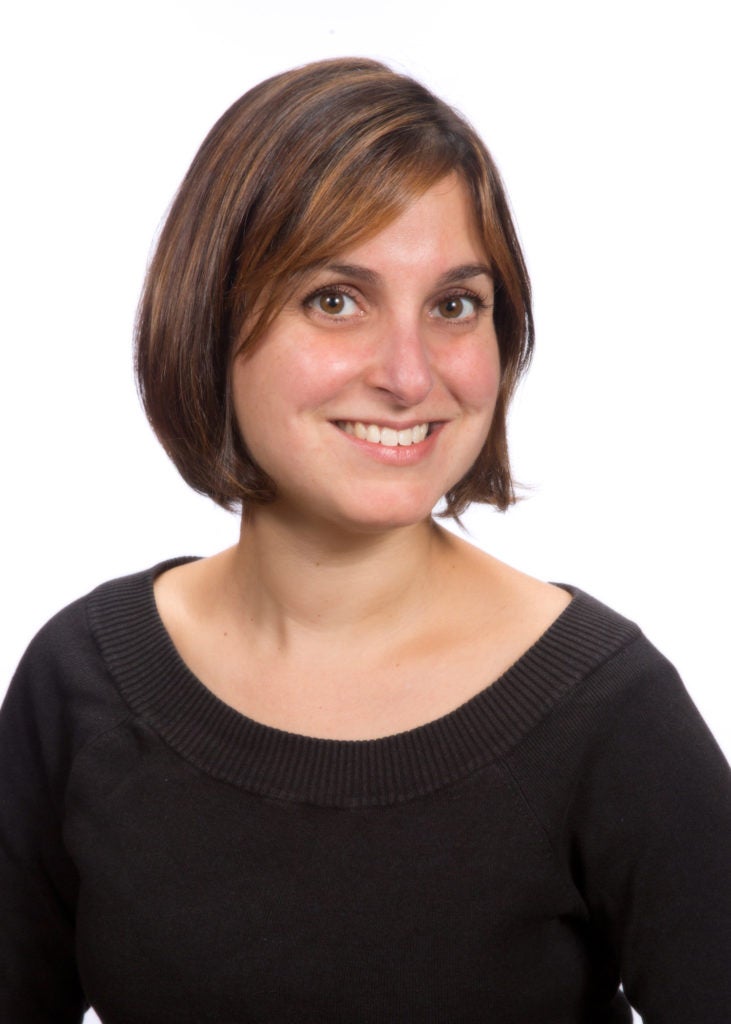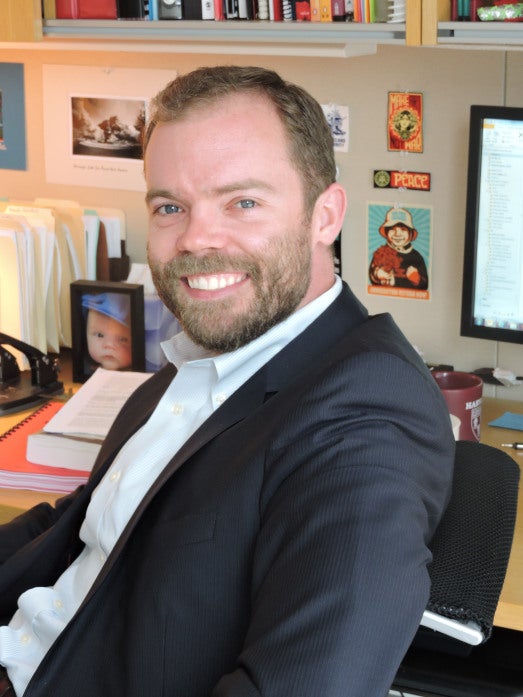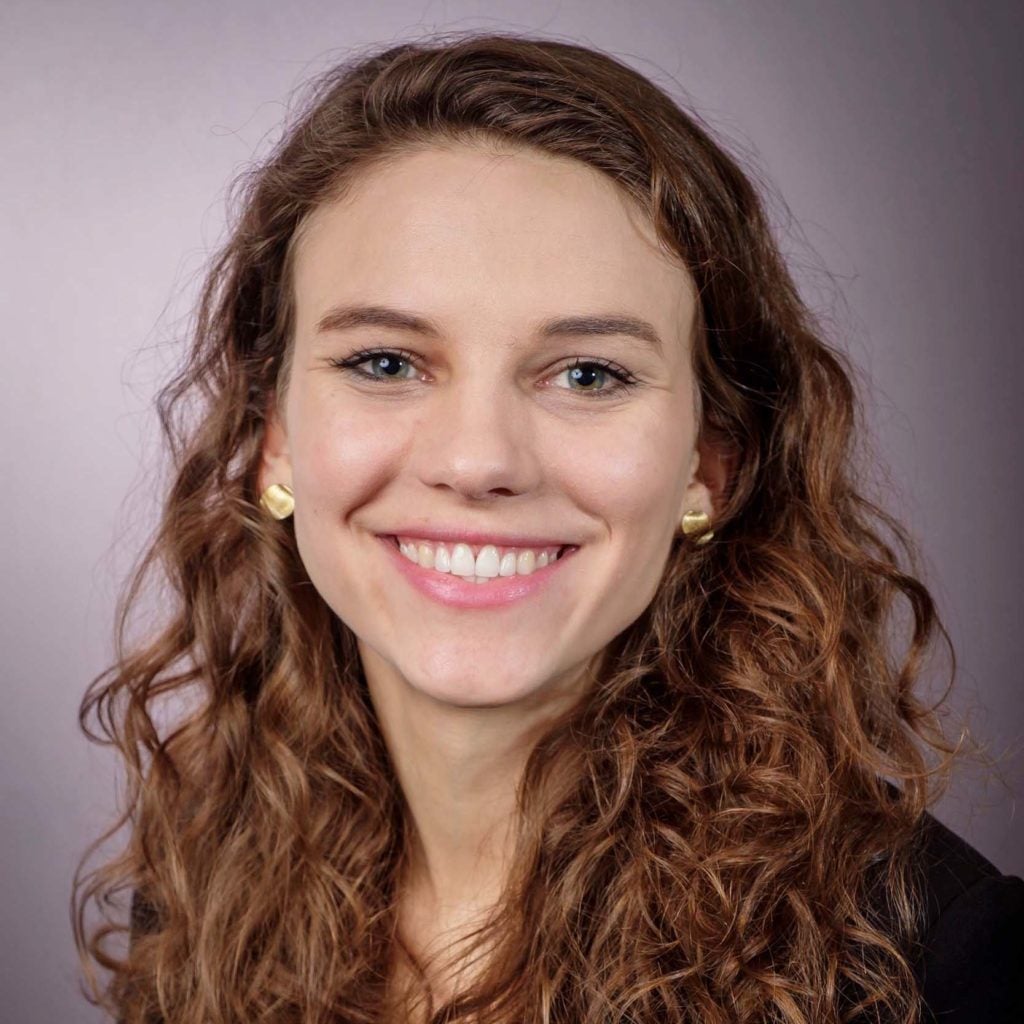When the Trump administration recently issued a new rule that would make it more difficult for people fleeing persecution in their own countries to apply for asylum in the United States, students in the Harvard Immigration and Refugee Clinical Program swung into action.
“I heard on a Thursday night that this rule came out and that we’d need to work through the weekend with the supervising attorneys and others to do the legal research and draft the complaint,” recalls Gabriel Zimmerman ’22. By the following Monday, Nov. 2, Zimmerman and other members of the program had joined two partner immigrant rights organizations and a law firm to file a lawsuit in the U.S. District Court for the Northern District of California against the U.S. Departments of Justice and Homeland Security, asking the judge to declare the new rule unlawful.
“This is a critically important victory, which will safeguard the lives of countless asylum seekers. The law students in both clinics who worked so hard on developing the legal theories and drafting the complaint were integral to making it happen.”
Sabrineh Ardalan ’02, Director of the Harvard Immigration and Refugee Clinical Program and Clinical Professor of Law
As part of the Harvard Law School Immigration and Refugee Advocacy Clinic, Zimmerman is one of several students who, working in partnership with students from the Crimmigration Clinic, helped lay the groundwork for the lawsuit last spring and file the complaint earlier this month. Last week, their efforts paid off when a federal judge in Northern California granted a nationwide injunction, temporarily preventing the rule from going into effect until litigation on the merits of the claims against it concludes.
“This is a critically important victory, which will safeguard the lives of countless asylum seekers,” said Sabrineh Ardalan ’02, who directs the program. “The law students in both clinics who worked so hard on developing the legal theories and drafting the complaint were integral to making it happen.”
The new policy, according to the plaintiffs, would have created “several vague and sweeping new bars to asylum eligibility … [and stripped] asylum-seekers of protections set forth in the Immigration and Nationality Act.” The new rule would expand the list of criminal violations that could prevent people from getting an asylum hearing to include a wide range of low-level offenses, including having used a false ID. The result, they say, would be to “dramatically curtail the availability of asylum to people fleeing persecution…[and] thus have a devastating impact on asylum-seekers.”

The complaint alleges that the new rule would violate the Administrative Procedure Act (APA), conflict with federal asylum law, and would be unconstitutional. The argument that the administration failed to correctly follow required rulemaking procedures has been a frequent claim in previous immigration litigation. In June, for instance, the U.S. Supreme Court invalidated the Trump administration’s attempt to terminate the Deferred Action for Childhood Arrivals program, commonly known as DACA, determining that the Trump administration had failed to meet the APA’s requirements.
For Iman Mohamed ’21, who worked with the Crimmigration Clinic last spring, there is a larger issue at stake. “Regardless of your criminal conviction, regardless of anything that you’ve done, you deserve to ask for asylum because you deserve to survive. Even if you have a conviction for driving under the influence—and we know that’s one of the top things that people are convicted for—that doesn’t make you a person undeserving of life and undeserving of safety.”

Philip Torrey, who serves as the program’s managing attorney and also directs the Crimmigration Clinic, believes the new rule fits into a broader pattern. “The new asylum rule is yet another example of the Trump administration’s obsession with criminalizing immigrants and shutting down our country’s asylum system,” he says. “Not only does the new rule violate a litany of federal laws, but it also stands in stark contrast to our nation’s long history of protecting refugees.”
Norah Rast ’21, who participated in the Immigration and Advocacy Clinic last year, agrees. “I believe really strongly in the idea that people who have been persecuted and experience threats against their race, religion, political freedom, and safety in their home countries, deserve to get asylum when they come to the United States,” she says. “I think we have a rich tradition of offering people safety and security here. And too often, the number of people that get asylum is limited. And the Trump administration has been a particularly strong example of trying to limit the number of people that can get asylum in every possible way.”
“Regardless of anything that you’ve done, you deserve to ask for asylum because you deserve to survive.”
Iman Mohamed ’21, Crimmigration Clinic
According to Mohamed—who is also working on her Ph.D. in history at Harvard’s Graduate School of Arts and Sciences and participated in the Crimmigration Clinic last spring—the U.S. approach to asylum goes back to two international treaties, the 1951 Refugee Convention and the 1967 United Nations Protocol Relating to the Status of Refugees.
“Both of these came out during the post-World War II era and were inspired by the horrific violence people escaping the Holocaust had to face, including the fortification of national borders which prevented people from reaching safety elsewhere,” Mohamed says. “It was a recognition that, as an international community, we have an obligation to all human beings to do what we can to keep them safe, especially when they have legitimate fears of persecution or violence in their home country. And as a signatory to the protocol, the United States has an international obligation to welcome anybody who has a well-founded fear of persecution.”
Students performed legal research, participated in regular conference calls with attorneys from partner organizations to discuss strategy, and helped draft the complaint and other filings. Working on the case, the students say, gave them important hands-on legal practice experience that they can’t get in the classroom.
“It was very rewarding to be part of a process of building litigation from the ground up” says Mohamed. “Our supervisors, Phil and Sabi, were very willing to hear our ideas. We learned a lot about the process like the many considerations involved in filing litigation. It’s very hard to learn that in a casebook, or in a black letter law class. And the stakes are high; this is going to affect thousands of people. It’s not just something in textbook or an exercise or an exam. You’re really trying to get it right so you can actually make a difference.”
“I’m the type person that really likes to learn by doing,” echoes Zimmerman. “And I think that the law, as applied, is often different from the law, as it is written. And in the clinic, you get to work with real clients in real time, with a supervisor who really understands the issues. It has been an integral part of my educational experience, especially as someone who’s interested in public interest law.”

“Being a clinical student is essentially like being a junior attorney,” says Rast. “The supervising attorneys do an amazing job of making sure that you are doing all of the work that you would do as an attorney, but you just have someone to run everything by and to sort of help you through every step. The clinic gave me the best possible opportunity to write briefs, draft motions, and dig into the filing requirements of each court.”
She also appreciated the faith placed in her by Ardalan. “Sabi was always making sure that we were meeting all of our expectations, but she trusted us a lot. And that gave me more confidence in myself as a lawyer and has helped me so much in everything else that I’ve done since. Getting a really good clinical experience and a relationship with a supervisor and the practice of doing that work is such a unique opportunity that I think no one should pass it up when they’re in law school.”
For several of the students, their interest in the subject was informed by their own experiences with the challenges of immigration, either in the United States or abroad.
Rast recalls working with refugees in Germany when the European migrant crisis reached its peak in 2016. When hundreds of thousands of people and families from several war-torn countries, including Syria, Afghanistan and Iraq, sought asylum in Europe, her home nation was among the most welcoming. “That was a very formative experience for me in thinking about how the law impacts refugees and immigrants more broadly, and really inspired me to come to law school and to want to pursue a career fighting for immigrants’ rights and civil rights more broadly,” she said.
For Zimmerman, that experience came in a trip to Latin America and as a volunteer working with asylum seekers along the Mexican border with the Kino Border Initiative, which promotes “humane, just, workable migration between the U.S. and Mexico.”
“I was working as a translator and working with the attorneys there to do preliminary interviews with folks on the Mexican side of the border who were seeking asylum,” he recalls. “And what I saw completely broke my heart. The stories that folks were telling me about the things they’d been through, both in their home countries on the journey—the discrimination, the violence—it was so powerful. … So, after that experience, I knew I wanted to at least try to do immigration law or the immigration clinic.”
